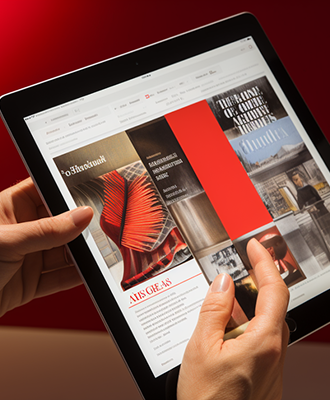
Have you noticed how some digital experiences feel instantly RELATABLE? When websites or apps resonate with your values, tone, and mood before you even read a single word, that is branding in action. Today, digital design isn’t just about usability, but about personality. Brand identity now lives in every micro-interaction, animation, tone of voice, and visual rhythm. It’s more than pixels: it’s what users feel. Let’s explore how well-crafted UI/UX rooted in branding becomes a voice that speaks to users, emotionally and functionally.
Why Branding in UI/UX Is the Foundation of Digital Identity
A strong digital identity begins with how branding influences users’ first impressions and long-term perceptions. Here’s how it builds trust, recognition, and the emotional resonance of a digital product.
Branding Shapes Perception and Trust
Branding in UX is not just about aesthetics. It’s about communicating who you are, what you stand for, and how you make people feel with every touchpoint. A cohesive brand-backed interface, not just a logo or colour palette, builds credibility and emotional connection.
Emotional Design Feel Before You Know
Emotional design is central to how users engage. From Donald Norman’s principles to modern examples, interfaces that evoke joy, surprise, or comfort become memorable. Colour, motion, layout, and micro-interactions each play their part.


How UI/UX Communicates Brand Voice
UI/UX is the silent brand ambassador, speaking in the voice your brand needs. Let’s see how design decisions shape perception, loyalty, and trust at every touchpoint.
Visual Brand Language Through UI Elements
Visual brand language uses consistent shapes, typography, colours, and interaction style to reflect a brand’s values. It’s how interfaces look and feel, recognisable even without a logo. Companies like Starbucks or BMW use subtle, consistent visual cues across platforms to reinforce identity.
Micro‑Interactions as Brand Moments
Those little animations like button transitions, hover effects, and loading feedback are more than delightful details. They communicate tone: friendly, confident, playful, or calm. Micro-interactions establish rhythm and brand personality at a tactile level.
Motion & Kinetic Typography to Reinforce Voice
Animated typography, scrolling transitions, and dynamic content shifts can express mood and energy: quiet and elegant, bold and assertive, or playful and vibrant. Kinetic design helps brand messaging cut through noise and engage viewers.
Strategic Branding in 2025 UX Trends
UX in 2025 is being used to craft engaging, emotionally resonant brand journeys that stay with users long after the interaction ends. Have a look:
Immersive, Story‑Driven Brand Journeys
Trend forecasts for 2025 emphasise immersive design, 3D graphics, parallax, and screen-by-screen storytelling to make interfaces feel lived‑in and narrative‑driven. When aligned with brand voice, these experiences strengthen identity.
Inclusive and Ethical Brand Alignment
Modern brands position themselves around values: inclusivity, mental wellness, and sustainability. UX that reflects these principles through symbolic visuals, accessibility-first practices, and mindful copy becomes an embodiment of brand promise.
Data-Driven Brand Optimisation
Digital branding is measurable. By tracking behavioural metrics like bounce rate, content engagement, and brand sentiment, designers refine visual and interactive branding. Analytics tools help align design tweaks with evolving audience perception.
Best Practices for Branding in Digital Design
| Best Practices | Insights |
|---|---|
| Build or Leverage a Design System | Component libraries, typography rules, and visual guidelines maintain brand coherence over time. A well-defined design system ensures consistency across platforms. |
| Align Brand Strategy and UX Design | Brand strategy sets values, promise, and positioning. UX should translate this into journeys, interaction logic, and tone. Designers and brand strategists are collaborating at an early stage |
| Test Branding Through User Feedback | Use qualitative testing—interview users about tone, clarity, emotional effect and quantitative measures like click-through or retention to evaluate whether branding resonates. |
| Use Motion to Support, Not Distract | Animations and visual effects should reinforce brand voice, not overshadow it. For an elegant brand, subtle transitions; for bold brands, energetic motion. Keep performance smooth and intent clear. |
Conclusion
Branded UI/UX in 2025 is purposeful. Thoughtful motion, cohesive design systems, strategic alignment, and emotional resonance work together to create digital spaces that feel alive, memorable, and meaningful.
At Dot&Beyond, we collaborate across branding, UX, and visual strategy to craft digital identities that speak and last. If you’re ready to design interfaces that are not only functional but emotionally meaningful, get in touch. Let’s make your brand feel like your brand.



